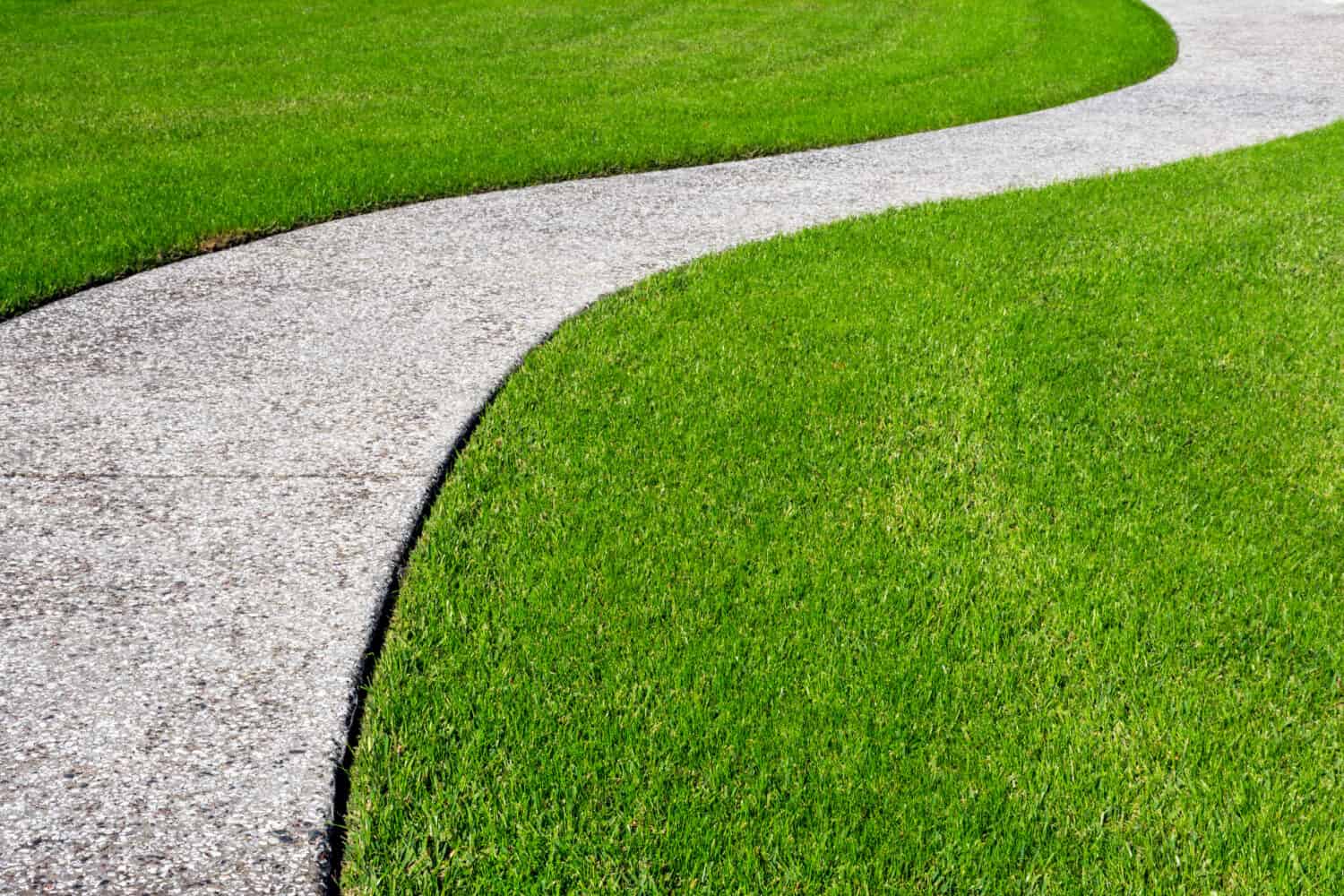A grass that thrives in the southern states, Zoysia sod is a warm-climate grass. It does marvelously in Georgia, specifically, because of its general needs, lush looks, and durability. Of course, the specific variety of Zoysia may affect how beneficial it is in your given lawn, golf course, or other locale, but overall, the grass is an excellent choice for practically anywhere in Georgia.
Basic Care for Zoysia Grass in Georgia
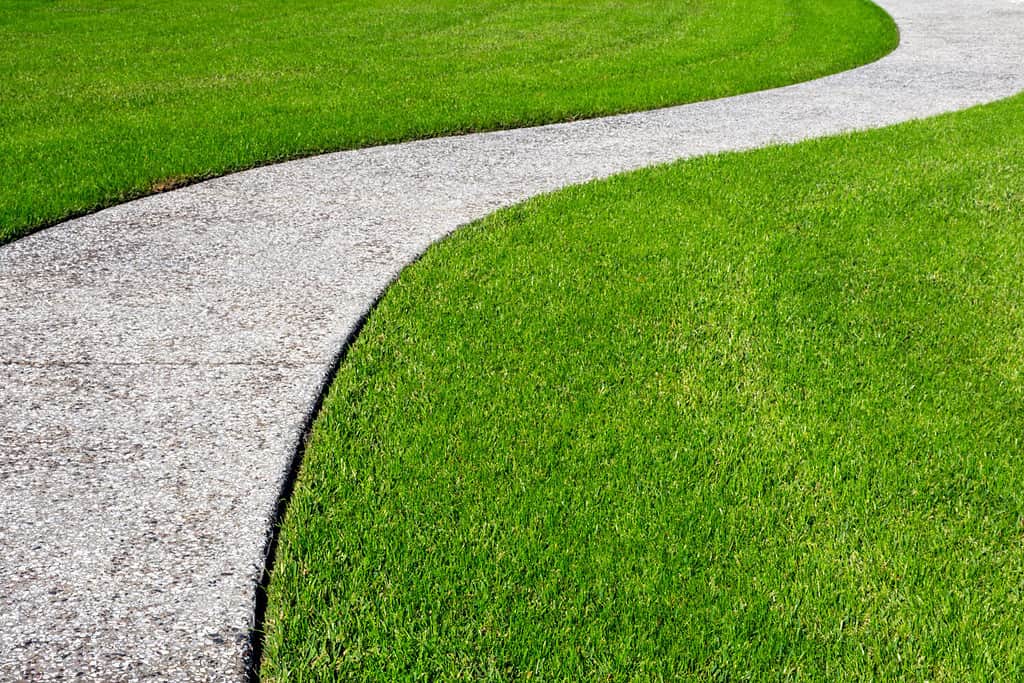
Zoysia grass is a bright, vivid green color when it’s healthy.
©Joanne Dale/Shutterstock.com
Generally speaking, all varieties of Zoysia grass do well in sunny locations with warm to hot temperatures. This is one reason the grass type is so great for the Peach State. The grass thrives in spring to early autumn, enjoying that hot, humid climate, and doesn’t need shade. It can handle a little shade, if need be, though. And it can even handle some drought.
For best results, though, you’ll want to keep these things in mind as you care for your Zoysia.
Planting Season
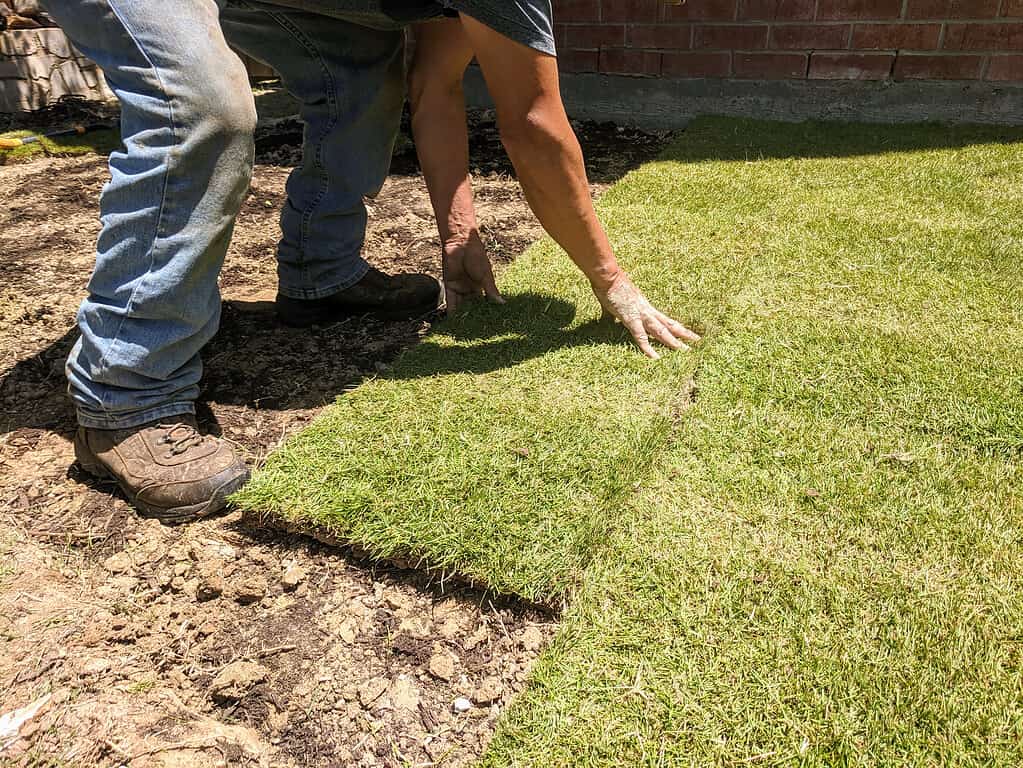
Installing zoysia grass sods after raking the soil smooth. It’s best when planted in warm months.
©Jasmine Sahin/Shutterstock.com
The best time to lay Zoysia sod is during warmer months in Georgia. Don’t plant too early or too late and you’ll develop rich, lush grass that stays greener longer than many others.
Fertilizer
While some lawn and sod grasses do well with fertilizer, Zoysia actually prefers a lot less than more. If it receives too much fertilizer, it will form a layer of thatch beneath.
Provide the grass with turf fertilizer once in springtime and then again in midsummer. Go for a slow-release nitrogen food and follow instructions for best results.
Mowing
Once the Zoysia is established, you’ll want to maintain the grass at about 1.5 inches in height. This may seem a bit specific, but this helps prevent the grass from forming thatch and cold injury issues.
The grass will go semi-dormant during drought and will go fully dormant in cool weather, so skip the mowing then.
If you’re worried that the grass has died during these periods, check the base for green sprouts.
Watering
An inch of rainfall or irrigation per week will meet the needs of your Zoysia grass. Be sure it’s a deep watering to help encourage the drought-resistant roots to stay strong.
Weeds
Apply pre-emergents in February and March to prevent crabgrass and other summer weeds from messing up your Zoysia grass. Repeat again in September or October to prevent winter weeds.
Aeration
If at all possible, provide your Zoysia with some aeration during May. Find a core aerator or spike aerator at your local garden center or hardware store and go completely over the lawn in one direction. Repeat coverage, going backward in a perpendicular direction.
Dethatching
If your Zoysia grass has developed any hatching, it’s best to do dethatching in the summertime. Dethatch if there’s more than a half inch.
Benefits of Zoysia Grass in Georgia
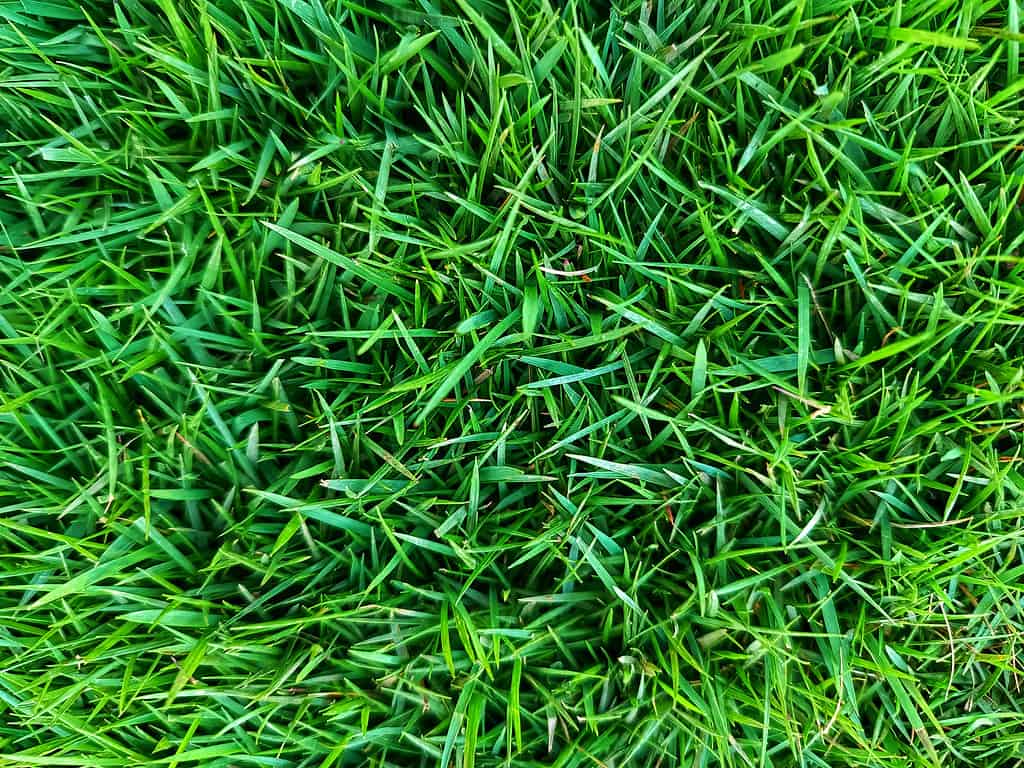
Zoysia grass grows best in warm weather.
©iStock.com/HendSTD
Zoysia grass is highly preferred by lawn owners, golf courses, and other high-traffic areas for several reasons.
- Zoysia grass is tough and handles high traffic well. This makes it great for parks, golf courses, busy backyards or front yards, and other areas where people come and go a lot.
- The grass is dense once it’s been established. That means it’s harder for weeds to break through and easier to keep it healthier. Insects and other pests also have a harder time breaking through.
- Slow-growing is a game-changer in grass for many. This means you don’t have to mow nearly as often as other grass varieties.
- Zoysia is bright and stays green longer. In fact, it’s one of the earliest grasses to show up green each spring.
- A deep root system means that Zoysia is eco-friendly. It needs little watering, handles drought, and still grows thick and vivid green.
- Because the grass needs less water, fewer mowing sessions, and rare fertilization, it’s also extremely low maintenance.
Spread Rate of Zoysia
Unlike a lot of grass species, Zoysia actually spreads by sending out runners, or stolons. This means the grass expands sideways and spreads, rather than growing taller and requiring more mowing time. Planting the Zoysia plugs closer together means the grass will establish and spread more quickly, as well, with a spread rate of about 1 to 2 inches per month in every direction during the growing season.
5 Best Types of Zoysia Grass for Georgia
Several varieties of Zoysia grass thrive in Georgia, thanks to the idyllic hot, sunny climate. The majority have the same basic care and maintenance needs, but some nuances between varieties might better suit your given needs.
Meyer Zoysia
The most cold-tolerant of Zoysia grass, Meyer is the top pick for northern regions in Georgia where some snow may come. It’s hardy but doesn’t tolerate hotter weather well, and needs the sun.
Meyer Zoysia:
- Tolerates hot weather, but not extreme heat
- Does okay in shade but prefers full sun
- Is fairly capable of handling traffic
- Tolerates salt reasonably well
- Recovers well from injury
- Needs more water than other types of Zoysia, requiring 3 to 4 inches in the hottest weather
- Does not tolerate wilting
- Requires mowing every 7 to 10 days
Empire Zoysia
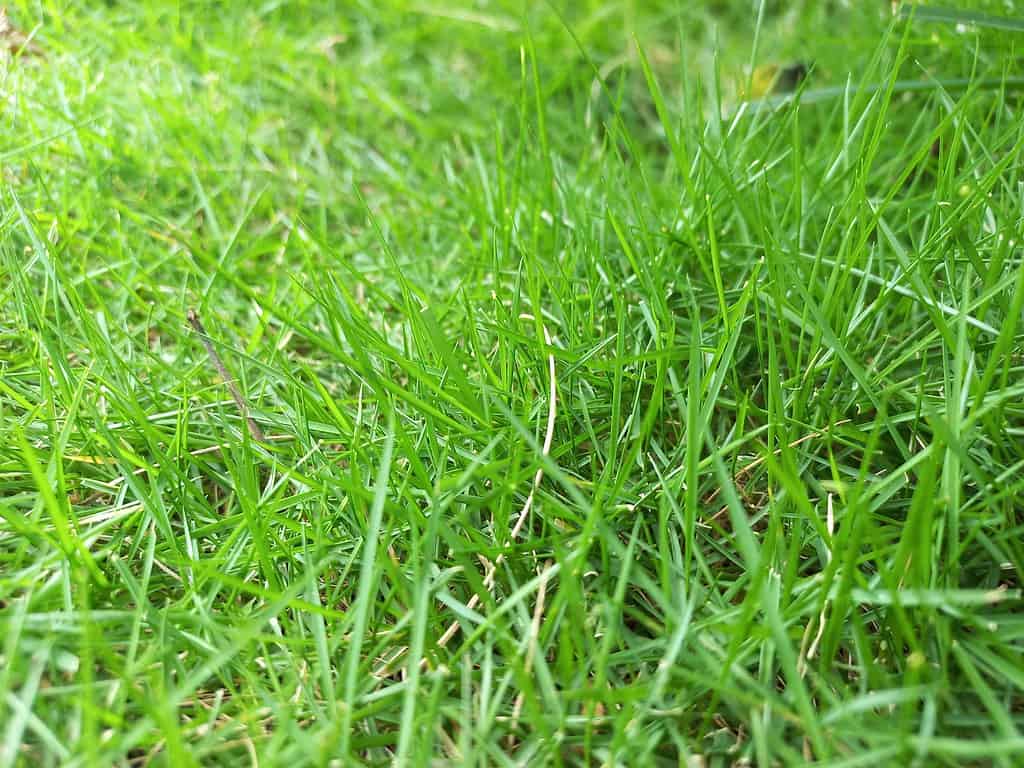
Empire Zoysia grass is one of the toughest of them all.
©Belajar Ceria/Shutterstock.com
One of the toughest varieties of Zoysia, the Empire Zoysia is particularly favored among busy folks who don’t have a lot of time for lawn maintenance. Once it’s established and growing well, it only needs to be watered when visible signs of dehydration show up. In many cases, more frequent watering can be detrimental to this type of Zoysia, as root rot, disease, and excessive growth occur.
Empire Zoysia:
- Does fine in shade
- Tolerates high heat and humidity
- Handles high traffic exceptionally well
- Has a high tolerance for salt
- Recovers well from injury
- Is exceptionally resistant to rodents and other pests, weeds, and disease
- Should not be watered more than 1 inch per week
Emerald Zoysia
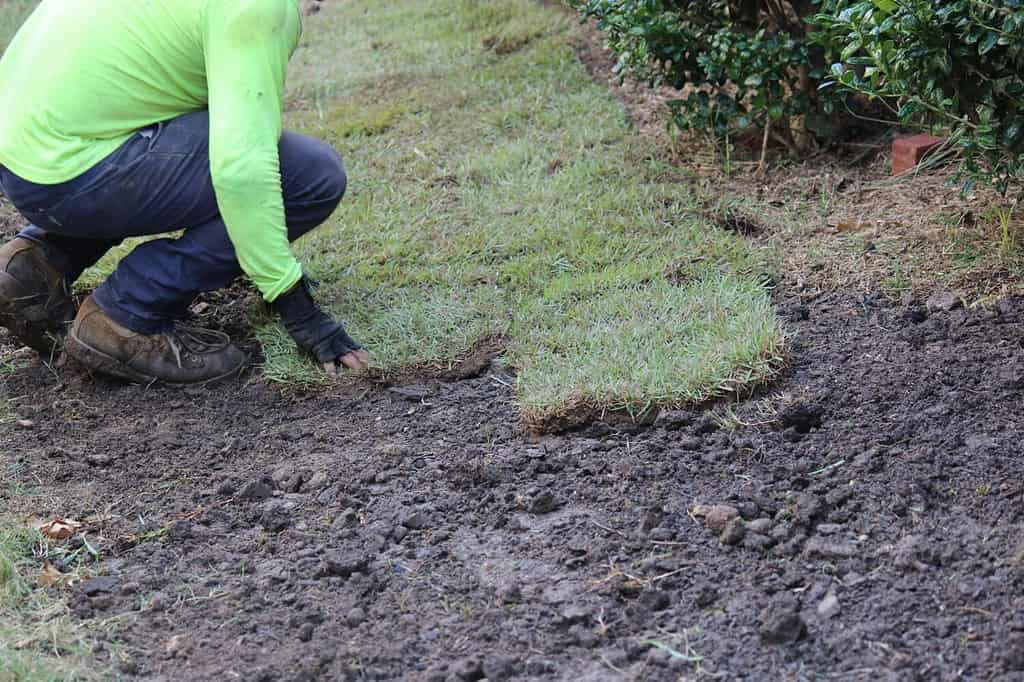
Before installed, emerald Zoysia may not be as bright. But once it’s established, it’s the most vivid of green grasses.
©Jasmine Sahin/Shutterstock.com
Thriving with a bit more care than Empire needs, Emerald Zoysia is still a tolerant, low-maintenance lawn grass. Thanks to its particulars, it’s also considered the most attractive of Zoysia grass in Georgia. With this in mind, many folks are willing to put in the extra effort (even if it is still low!) to care for this variety over another.
Emerald Zoysia:
- Does well in extreme heat
- Prefers full sun to medium shade
- Is exceptionally tolerant of high levels of traffic
- Tolerates salt fairly well
- Slowly recovers from injury
- Needs 1 inch of water weekly
JaMur Zoysia
Perhaps the most drought tolerant, JaMur Zoysia is one of the most adaptable varieties of Zoysia grass in Georgia. It prefers full shade but handles moderate sun, needs less watering, and is exceptionally versatile and desirable as a turf grass. It’s also super compact with excellent regrowth rates. This is a great option for busy folks.
JaMur Zoysia:
- Tolerates hot weather well
- Tolerates partial shade
- Is exceptionally wear resistant
- Tolerates salt fairly well
- Recovers well from injury
- Requires infrequent watering, when signs of dehydration appear
Zeon Zoysia

©NicholasGeraldinePhotos/Shutterstock.com
This particular variety of Zoysia was developed specifically for the landscaping industry. The grass is especially fine-bladed, has a higher tolerance for shade, and has low incidence of thatching. It’s also one of the fastest-growing varieties of Zoysia but needs little maintenance.
Zeon Zoysia:
- Tolerates hot well extremely well
- Does well in medium to high shade
- Handles high traffic well
- Is excellent at salt resistance
- Recovers well from injury
- Needs infrequent watering – look for signs of dehydration
Thank you for reading! Have some feedback for us? Contact the AZ Animals editorial team.

